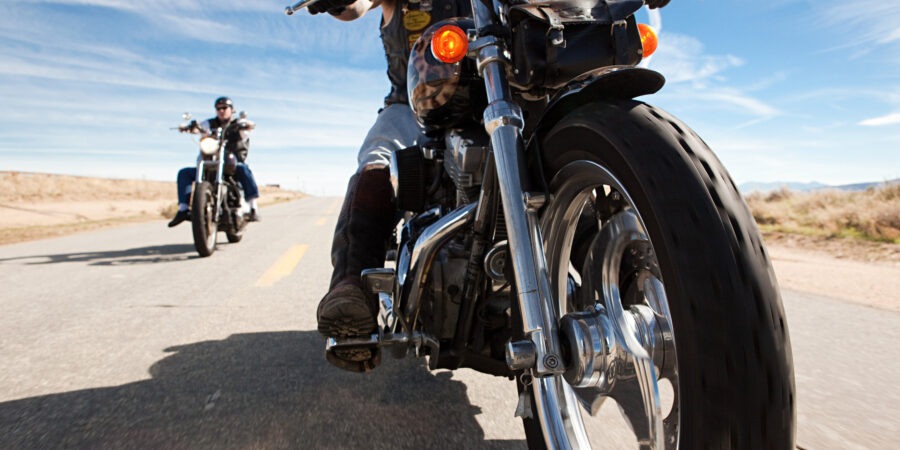California Motorcyclists: Is Lane Splitting Legal?
Lane splitting is a common practice among California motorcyclists. This is where riders travel between lanes of traffic on a roadway. Despite its popularity, splitting lanes is a controversial maneuver that has been the subject of much debate among lawmakers, law enforcement and the general public. We’ll look closer at the legality of lane splitting in California, the safety guidelines that govern the practice, as well as the benefits and risks for motorcyclists.
Is lane splitting legal in California?
Lane splitting is, in fact, legal in California. Although the tactic is legal, specific laws and regulations regulate it. Why is lane splitting legal in California? California vehicle code section 21658.1 states, “the operator of a motorcycle shall not overtake and pass in the same lane occupied by the vehicle being overtaken.” This means motorcyclists may split lanes legally, but they must do so safely and responsibly in a manner that does not endanger themselves or other, surrounding drivers on the road.
Lane Splitting Safety Guidelines
In addition to the vehicle code, the California highway patrol has issued guidelines for motorcyclists who wish to split lanes.
- The driver stays within three feet of the center line.
- They are moving at most ten mph faster than traffic.
- The driver does not modify their motorcycle to go faster than 30 mph.
- The driver is not weaving in and out of traffic.
- Be as close as possible to the right or left line of traffic.
- The driver can see oncoming traffic, and the oncoming drivers can see the driver.
- Motorcycle riders should ride as close to the lane dividing lines as possible.
- Always yield to drivers if there is a need to change lanes or merge into traffic.
- Use their mirrors and constantly check the road behind them.
When NOT to Lane Split
In addition to the above rules, splitting lanes cannot be done in any of the following circumstances:
- When a “Do Not Splits” sign is posted along the road.
- If the speed limit is above 50 mph or a sign indicates that the speed limit is over 50 mph.
- In school zones, construction areas, and expressways.
- By taxi drivers or other people who might be distracted by passengers in the car.
- It is also important to note that splitting lanes should not be done between vehicles if a bike lane is present and available for use.
- Lastly, bikers have been advised to stay off freeways with no bike lanes and to stay out of construction zones where splitting lanes is illegal.
California motorcyclists will have an easier time determining what states identify lane splitting as legal versus drivers who live in states where lane-splitting is illegal. The California motorcyclist safety program offers tips for all motorcyclists, which can help them learn the best techniques for lane-splitting.
Best Lane Splitting Techniques
- If a bike lane is available, they should not split lanes.
- If there is no bike lane, they should move as close to the right line of traffic as possible.
- It is only allowed when traffic flow is 30 mph or under.
- There are some instances where bikers may be allowed to lane split.
- They should not do it if there is no bike lane available or if they look like they will run over people or cause accidents.
The California motorcyclist safety program offers motorcycle safety resources for both emerging and experienced motorcyclists that can help make it easier to know the rules of the road and to make sure that they have great knowledge of the laws of riding a motorcycle to help reduce accidents in your state. An excellent place to start is to use the California motorcyclist safety program’s website, which provides resources for new and experienced motorcyclists.
CHP Motorcycle Safety Tips
The CHP’s guidelines for safe lane-splitting are designed to reduce the risk of accidents and injuries for motorcyclists. The guidelines emphasize the importance of traveling at a safe speed and avoiding sudden movements that could startle other drivers. They also recommend that motorcyclists use their mirrors and turn signals to communicate their intentions to other drivers and prevent lane-splitting when poor visibility or traffic is heavy.
In addition to the CHP guidelines, the motorcycle safety foundation has developed its own set of recommendations for safe lane-splitting. The MSF advises motorcyclists to wear protective gear, including helmets, gloves and sturdy boots. They also recommend that motorcyclists take a motorcycle safety course to improve their skills and knowledge of safe riding practices.
Benefits of Lane Splitting
Lane splitting has both benefits and risks. The primary benefit is that it allows motorcyclists to get through congested traffic, which can be difficult for riders to navigate when it is stopped or moving slowly. This can be especially beneficial in situations where a motorcyclist needs to get through heavy traffic quickly.
Risks of Lane Splitting
Risks and dangers of lane-splitting include collisions with other vehicles or objects, injury from colliding with a vehicle or hard surface and road debris. Motorcyclists may also face risks from oil, broken glass and other hazards that can be present on the road. Many states have laws against riding motorcycles between lanes of traffic. Some states also have laws that put limits on when a motorcyclist can lane split. For example, in some states, lane-splitting is illegal on freeways that have a speed limit of 45 mph or greater. In addition, many states are now passing laws that prohibit lane-splitting into school zones, construction zones and on expressways.
Splitting lanes is considered unnecessary by law enforcement.
Most motorcycle accidents involving splitting lanes happen because the motorcyclist either failed to understand state laws or misjudged the risks of such actions. Motorcyclists should remain attentive and need to watch out for slow-moving vehicles and other road hazards when they are lane-splitting.
Splitting lanes is a hazard.
There is no question that lane-splitting poses risks to both motorcyclists and other, surrounding drivers on the road. This is true for experienced motorcyclists and first-time riders. It takes very little time for a traffic collision to turn a novice rider’s trip into a potential disaster.
The only way to reduce the risks of lane-splitting is to stop it altogether. However, there are situations where lane-splitting is nearly unavoidable, such as in rush-hour traffic when the flow is slow enough that riders can’t easily merge into lanes on either side. In such situations, riders may find that it is safer to split lanes than to stop and restart.
Splitting lanes reduces traffic congestion.
When lane-splitting is legal in a state, it can help reduce traffic congestion by moving motorcycles through congested traffic faster. This is especially helpful if the volume of traffic is so heavy that it slows speeds to a crawl.
Lane Splitting in Other States
In most states, lane-splitting is legal when the flow of traffic is slow enough that it takes more than one minute for a motorcyclist to merge into traffic. Some states have laws that require that motorcycle drivers wait at least one minute after passing a vehicle before splitting lanes.
A motorcycle can also split lanes if it travels at speeds of 35 mph or less. However, in order to be more conservative, the motorcyclist should travel no faster than 33 mph while passing another motorist or object along the road.
The Advantages of Splitting Lanes
Lane splitting benefits motorcyclists by reducing traffic congestion and speeding up their trips. However, it has also led to many accidents that have resulted in injuries or deaths for motorcyclists and other drivers on the road. Laws against lane-splitting are designed to reduce the risks of such accidents and can make it easier for a motorcyclist who is injured in a collision to recover damages from the driver of the car or truck that caused the accident.
Questions on lane splitting safety?
We can help – (855) 559-1225
At JT Legal Group, our 30+ years of combined experience allows us to diligently achieve settlements for our deserving clients. Our office is so confident we can win the best possible result for our clients, that we work on a contingency basis. This means we don’t get paid until we settle our client’s matter. Contact our team today for immediate support.
Your victory starts here.
Click to call us now!
[NOTE:] Attorney Advertising: Nothing posted on this blog is intended, nor should be construed, as legal advice. Blog postings and hosted comments are available for general educational purposes only and should not be used to assess a specific legal situation. Nor does any comment on a blog post create an attorney-client relationship. The presence of hyperlinks to other third-party websites does not imply that the firm endorses those websites, their contents, or the activities or views of their owners.
Media Contact: Jesamine De Leon
[email protected]
(855) 559-1225




